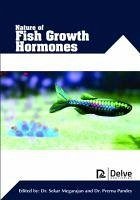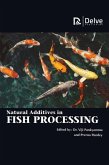Growth rate is a primary trait of interest in most finfish selection programs and is intrinsically linked to productivity and profitability of finfish aquaculture industry in several parts of the world. Search for candidate genes influencing growth has been a major focus of research in aquaculture and several such genes have been isolated from the fish genome and their effects are quantified. Growth hormone genes have been studied extensively in many species because of its potential in enhancing the growth rate of fishes in aquaculture. The identified growth hormone gene in most of the fishes is roughly 1.5 kb long, with the protein coding region divided in to four to five blocks (exons) representing less than one third length of the genomic region. Growth hormone (GH) is a single chain polypeptide that plays a major role in the growth development of vertebrates. It is the main regulator of postnatal somatic growth and stimulates anabolic processes such as cell division, skeletal growth and protein synthesis. In addition, growth hormone is also involved in the regulation of fat oxidation, inhibition of glucose transport to peripheral tissues and regulation of ribosome translational activity, which in turn influences protein synthesis. Presently, the importance of GH as a candidate gene for studies of genetic variation in connection with growth traits and potential natural marker for studies of evolutionary relationship of various fishes has been demonstrated. Its potential application in the growth traits and fish evolution studies has been an active area of research. Natural growth rates of organisms have evolved to provide maximum fitness in wild environments and therefore, enhancement of natural growth rate of fish in aquaculture has been extensively explored, with gains arising from improvements in husbandry, nutrition, and genetical selection. Growth enhancement can be advantageous for aquaculture by shortening production time, and enhancing feed conversion efficiency. Therefore, endocrine approaches in controlling growth have been extensively explored. Several studies have demonstrated the efficacy of mammalian GH in the acceleration of growth of various species. In fish, GH administration by various modes of delivery like injection, and oral administration of hormones has been successfully studied. These studies have suggested that the exogenous growth hormone enhances fish growth by stimulating appetite and improving feed conversion. It is clearly understood that growth hormone plays major role in aquaculture industry by increasing the growth. Therefore, knowing the different aspects of growth hormone is very much essential for the researchers aim for growth enhancement in fishes.
Hinweis: Dieser Artikel kann nur an eine deutsche Lieferadresse ausgeliefert werden.
Hinweis: Dieser Artikel kann nur an eine deutsche Lieferadresse ausgeliefert werden.








